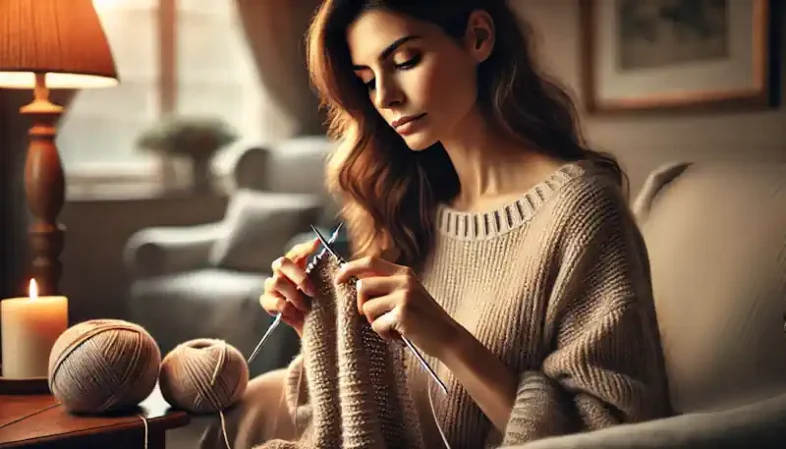Knitting using a knitting machine as opposed to the more conventional method of knitting by hand.
Benefits of Using a Knitting Machine Over Traditional Hand Knitting
Knitting enthusiasts and professionals alike are increasingly turning to knitting machines for their projects and for good reason.
One of the primary benefits of using a knitting machine over traditional hand knitting is the significant increase in efficiency and speed. With a knitting machine, intricate patterns and large-scale machine knitter projects can be completed in a fraction of the time it would take by hand, making it an ideal choice for those who produce garments for commercial purposes or have tight deadlines.
Additionally, knitting machines offer unparalleled precision and consistency, ensuring that each stitch is uniform and reducing the likelihood of errors. This level of accuracy is particularly advantageous for complex designs that require meticulous attention to detail.
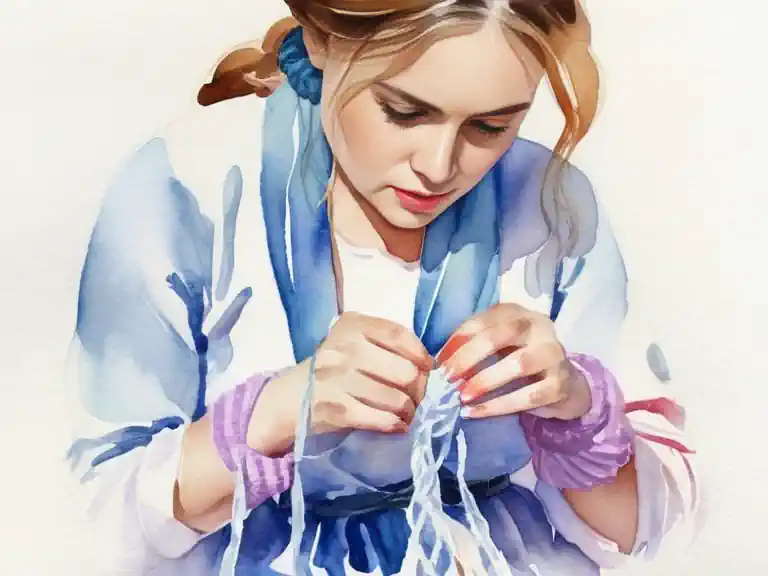
Another notable advantage is the reduction in physical strain; hand knitting can be taxing on the wrists and hands, whereas a machine can alleviate this discomfort, allowing for longer knitting sessions without the associated fatigue.
Moreover, knitting machines are versatile and capable of creating a wide range of stitches and patterns that might be challenging or time-consuming to achieve manually.
In conclusion, the adoption of knitting machines not only enhances productivity and quality but also opens up new creative possibilities for knitters of all skill levels.
Types of Knitting Machines
Knitting machines have revolutionized the textile industry, providing efficiency and precision that hand knitting simply cannot match. There are several types of knitting machines, each designed for specific applications and fabric types.
Flatbed knitting machines: These are commonly used for producing flat fabrics and are ideal for creating items like scarves, blankets, and sweaters. These machines can be manual or computerized, offering varying levels of complexity and control.
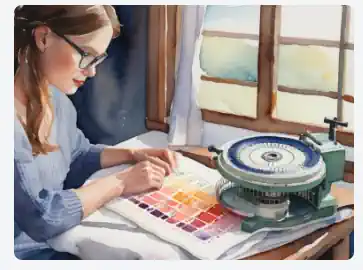 Circular knitting machines; on the other hand, are designed to produce tubular fabrics and are widely used in the production of t-shirts, socks, and other seamless garments. These machines are highly efficient and can operate at high speeds, making them perfect for mass production.
Circular knitting machines; on the other hand, are designed to produce tubular fabrics and are widely used in the production of t-shirts, socks, and other seamless garments. These machines are highly efficient and can operate at high speeds, making them perfect for mass production.
Warp knitting machines are another category, known for their ability to create intricate, stable fabrics that are often used in technical textiles and lace production. Lastly,
double-bed knitting machines** offer the versatility to produce both flat and tubular fabrics, making them a popular choice for more complex garments. Understanding the different types of knitting machines and their specific applications can help manufacturers choose the right equipment for their needs, ultimately improving productivity and product quality.
Flatbed Knitting Machines
Flatbed knitting machines have revolutionized the textile industry by offering unparalleled precision and efficiency in fabric production. These advanced knitting devices utilize a flat needle bed to create a variety of complex and intricate knit patterns, making them ideal for both high-volume manufacturing and bespoke garment creation.
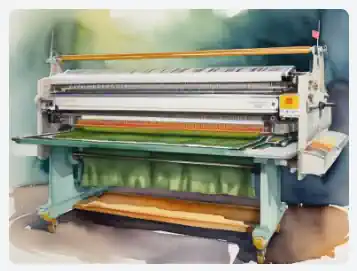
One of the key advantages of flatbed knitting machines is their ability to produce seamless, high-quality fabrics with minimal waste, contributing to more sustainable production practices. Additionally, these machines are highly versatile, capable of working with a wide range of yarns and materials, from fine silks to heavy wools.
This versatility allows textile manufacturers to meet diverse market demands and stay ahead of fashion trends. With the integration of computerized control systems, modern flatbed knitting machines offer enhanced customization options, enabling designers to experiment with new textures and patterns with ease.
Moreover, the automation features reduce labor costs and increase production speed, making flatbed knitting machines a cost-effective solution for textile businesses. As the demand for innovative and sustainable textiles continues to grow, flatbed knitting machines stand out as a crucial technology driving the future of textile manufacturing.
Circular Knitting Machines
Circular knitting machines have revolutionized the textile industry, offering unparalleled efficiency and versatility in fabric production. These advanced machines are designed to knit in a continuous circular motion, creating seamless tubes of fabric that can be used for a variety of applications, from apparel to industrial textiles. One of the key advantages of circular knitting machines is their ability to produce high-quality fabrics at a rapid pace, significantly reducing production time and costs.
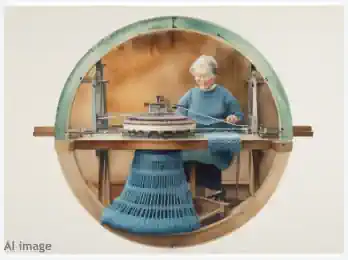
They are equipped with multiple needles arranged in a circular configuration, allowing for intricate patterns and fine-gauge fabrics that are difficult to achieve with traditional flatbed knitting machines.
Additionally, circular knitting machines are highly adaptable, capable of working with a wide range of yarns and materials, including natural fibers, synthetic blends, and high-performance textiles.
This adaptability makes them an ideal choice for manufacturers looking to innovate and diversify their product offerings.
With advancements in technology, modern circular knitting machines also come with computerized controls, enabling precise adjustments and consistent fabric quality. As the demand for efficient and versatile textile production continues to grow, circular knitting machines remain at the forefront, driving innovation and sustainability in the industry.
Choosing the Right Knitting Machine
A Comprehensive Guide Selecting the perfect knitting machine can significantly impact the quality and efficiency of your knitting projects. Whether you’re a seasoned knitter or a beginner eager to explore the world of machine knitting, understanding the various types of knitting machines available is crucial.
Start by determining the scope of your projects; are you focusing on intricate patterns or simple, repetitive designs?
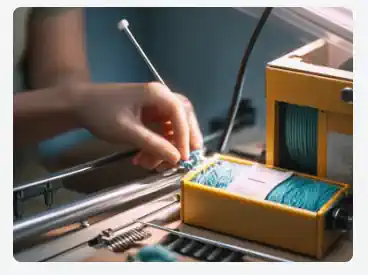
For complex patterns, an electronic knitting machine with programmable features might be ideal, offering precision and ease of use. On the other hand, manual knitting machines are perfect for straightforward projects and provide a hands-on, tactile experience.
Consider the gauge of the machine—fine gauge machines are suitable for delicate, lightweight fabrics, while bulky gauge machines handle thicker yarns with ease.
Additionally, assess the brand reputation and customer reviews to ensure reliability and durability. Investing in a knitting machine that aligns with your specific needs and skill level can lead to more enjoyable and productive knitting sessions.
Remember, the right knitting machine not only enhances your creativity but also ensures that your knitting endeavours are both satisfying and successful.
Setting Up Your Knitting Machine
Setting up your knitting machine can seem daunting, but with the right guidance, it becomes a straightforward and rewarding process.
-
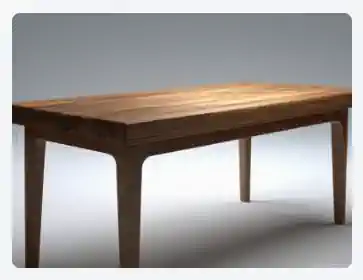
Image showing a sturdy knitting machine table. First, ensure you have a stable, flat surface to place your machine on.
- Unbox your knitting machine carefully, checking all components against the manual to ensure nothing is missing.
- Assemble the main body of the machine, attaching the yarn mast and tension arm as per the instructions.
- Next, thread the yarn through the tension assembly and guide it through the various hooks and eyelets, ensuring it flows smoothly without any tangles.
- Attach the cast-on comb and weights to provide the necessary tension for even stitches.
- Before starting your first project, run a few test rows to ensure the machine is functioning correctly and the stitches are consistent.
- Adjust the tension settings if necessary to match the yarn type and desired stitch tightness.
That’s it. Start knitting!
Regular maintenance, such as oiling the moving parts and cleaning the needles, will keep your knitting machine in optimal condition.
By following these steps, you can set up your knitting machine efficiently, paving the way for countless creative projects. Proper setup not only enhances your knitting experience but also ensures the longevity and performance of your machine.
Basic Knitting Techniques
 Knitting is a timeless craft that offers both relaxation and a sense of accomplishment. For beginners, mastering basic knitting techniques is essential to creating beautiful and functional pieces.
Knitting is a timeless craft that offers both relaxation and a sense of accomplishment. For beginners, mastering basic knitting techniques is essential to creating beautiful and functional pieces.
The first fundamental technique is the knit stitch, which forms the backbone of most patterns.
To execute this stitch,
- insert the right needle into the first loop on the left needle, wrap the yarn around the right needle, and pull it through.
- Next, the purl stitch complements the knit stitch, creating a versatile texture. By alternating knit and purl stitches, you can create ribbing, stockinette, and other patterns.
Casting on is another crucial technique, setting the foundation for your project. The long-tail cast-on is popular for its elasticity and ease.
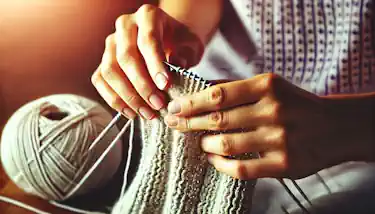 Binding off, or casting off, finishes your project by securing the stitches. Understanding these basic knitting techniques empowers you to tackle more complex patterns and projects. With practice, you’ll develop speed and precision, allowing your creativity to flourish.
Binding off, or casting off, finishes your project by securing the stitches. Understanding these basic knitting techniques empowers you to tackle more complex patterns and projects. With practice, you’ll develop speed and precision, allowing your creativity to flourish.
Whether you’re knitting a cosy scarf or an intricate sweater, mastering these foundational skills will ensure your success and enjoyment in the craft. Happy knitting!
Stockinette Stitch
The stockinette stitch, often hailed as a cornerstone in the world of knitting, is a fundamental technique that every knitter should master.
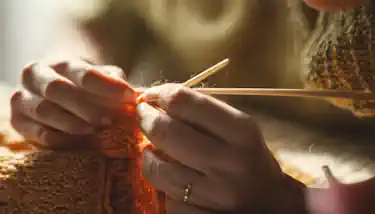 Characterized by its smooth, V-shaped stitches on the front and distinctive bumpy texture on the back, the stockinette stitch is incredibly versatile and forms the basis for countless knitting projects.
Characterized by its smooth, V-shaped stitches on the front and distinctive bumpy texture on the back, the stockinette stitch is incredibly versatile and forms the basis for countless knitting projects.
To create this stitch, knitters alternate between knitting one row and purling the next, resulting in a fabric that is both flexible and visually appealing.
This stitch is ideal for everything from simple scarves and cosy sweaters to intricate patterns and designs. Not only does the stockinette stitch provide a clean and professional finish, but it also enhances the drape and elasticity of the knitted fabric.
For those looking to refine their knitting skills, practising the stockinette stitch is a must. By mastering this technique, knitters can unlock a world of creative possibilities, ensuring their projects are both beautiful and durable.
Whether you are a beginner or a seasoned knitter, the stockinette stitch is an essential addition to your repertoire, offering endless opportunities to showcase your craftsmanship.
Ribbing
Ribbing is a fundamental technique in knitting that adds both functionality and aesthetic appeal to your projects. Characterized by its alternating columns of knit and purl stitches, ribbing creates a fabric that is highly elastic and textured.
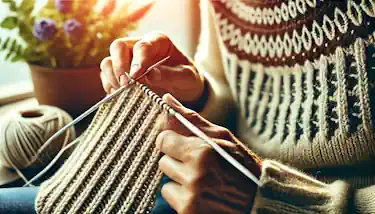 This makes it an ideal choice for edges of garments, such as cuffs, collars, and waistbands, where stretch and shape retention are crucial.
This makes it an ideal choice for edges of garments, such as cuffs, collars, and waistbands, where stretch and shape retention are crucial.
The most common types of ribbing include 1×1 ribbing, which alternates single knit and purl stitches, and 2×2 ribbing, which alternates two knit stitches with two purl stitches. Not only does ribbing provide a snug fit, but it also adds a decorative element to your knitting projects.
Mastering this technique can significantly enhance the overall quality of your creations. Whether you are a beginner or an experienced knitter, understanding the nuances of ribbing will help you produce professional-looking garments that stand the test of time.
For optimal results, choose the right yarn and needles, and pay close attention to your tension to ensure even stitches. By incorporating ribbing into your knitting repertoire, you can elevate your craft and create pieces that are both functional and stylish.
Changing Colors
The phenomenon of changing colours in nature captivates scientists and nature enthusiasts alike, offering a vivid display of the intricate processes that govern our natural world.
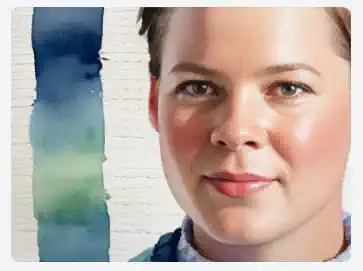 From the vibrant hues of autumn leaves to the chameleon’s adaptive camouflage, colour changes are a testament to the dynamic interactions within ecosystems.
From the vibrant hues of autumn leaves to the chameleon’s adaptive camouflage, colour changes are a testament to the dynamic interactions within ecosystems.
During autumn, the green chlorophyll in leaves breaks down, revealing stunning reds, oranges, and yellows that were previously masked.
This transformation is not merely aesthetic; it plays a crucial role in the plant’s life cycle, aiding in the conservation of resources for the winter months.
Similarly, animals like chameleons and octopuses change colours as a survival mechanism, whether to evade predators or to communicate with others of their species.
Troubleshooting Common Knitting Machine Issues
When it comes to maintaining the smooth operation of your technology, encountering issues is almost inevitable.
However, troubleshooting common issues doesn’t have to be a daunting task.
Start by identifying the problem; is it a software glitch, hardware malfunction, or a connectivity issue?
 For software-related problems, ensure your system is up-to-date and check for any recent updates or patches that might resolve the issue. Hardware troubles can often be diagnosed by checking connections, ensuring devices are properly plugged in, and looking for any visible damage.
For software-related problems, ensure your system is up-to-date and check for any recent updates or patches that might resolve the issue. Hardware troubles can often be diagnosed by checking connections, ensuring devices are properly plugged in, and looking for any visible damage.
Connectivity issues, on the other hand, may require you to reset your router or check your network settings. Utilizing built-in troubleshooting tools can also be immensely helpful. For example, Windows and macOS offer diagnostic tools that can automatically detect and sometimes fix problems.
If the issue persists, consulting online forums or the manufacturer’s support page can provide additional insights and potential solutions.
By systematically approaching each problem with these steps, you can effectively troubleshoot common issues and restore functionality quickly.
Remember, patience and a methodical approach are key to successful troubleshooting.
Maintaining Your Knitting Machine
Maintaining your knitting machine is crucial for ensuring its longevity and optimal performance.
Regular maintenance not only helps prevent unexpected breakdowns but also guarantees smoother and more efficient knitting sessions. Start by keeping your machine clean; dust and lint can accumulate quickly, leading to mechanical issues.
Use a soft brush or compressed air to remove debris from hard-to-reach areas. Lubrication (Note: This is an Amazon Link) is another key aspect; apply a few drops of machine oil to the moving parts as specified in your machine’s manual. This reduces friction and wear, extending the life of your knitting machine.
Additionally, check the needles and other components regularly for signs of wear or damage and replace them as needed to maintain the quality of your knitting projects. Proper tension settings are also vital; incorrect tension can lead to uneven stitches and fabric distortion.
Lastly, store your knitting machine in a dry, dust-free environment when not in use to prevent rust and other damage.
By following these maintenance tips, you can ensure that your knitting machine remains in top condition, providing you with years of reliable service and beautifully crafted knitwear.
Selecting the Right Yarn
Choosing the right yarn is crucial for any knitting or crocheting project, as it significantly impacts the final product’s texture, durability, and appearance.
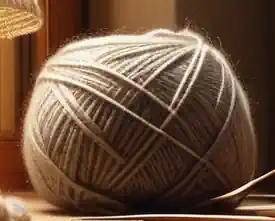
When selecting yarn, consider the project’s purpose and the desired outcome. For garments like sweaters or scarves, soft, breathable yarns such as merino wool or cotton are ideal.
These fibres offer comfort and warmth while maintaining breathability. For more structured items like bags or home décor, sturdier yarns such as acrylic or nylon blends provide the necessary durability and shape retention.
Additionally, pay attention to the yarn weight, which ranges from lace to super bulky, as it affects the project’s drape and stitch definition.
Colour and dye lot consistency are other critical factors; ensure you purchase enough yarn from the same dye lot to avoid noticeable colour variations.
Lastly, consider any allergies or sensitivities to certain fibres, opting for hypoallergenic options if needed. By carefully evaluating these aspects, you can select the perfect yarn that meets both your project’s requirements and your personal preferences, ensuring a successful and satisfying crafting experience.
Creating Various Patterns
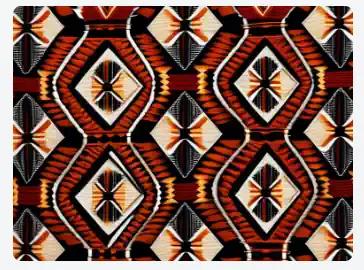
Creating various patterns is an essential skill for designers, artists, and crafters alike.
Patterns add depth, interest, and cohesion to any project, whether it’s a textile design, a digital background, or a piece of fine art. To master the art of pattern creation, one must understand the fundamental principles of repetition, symmetry, and balance.
Start by experimenting with simple geometric shapes and gradually incorporate more complex elements such as organic forms and intricate motifs.
Moreover, studying historical and cultural patterns can provide valuable insights and inspiration.
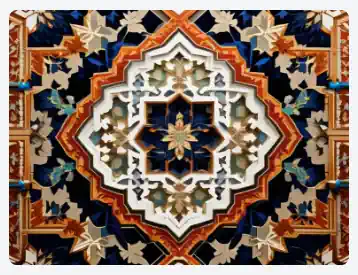
For instance, the intricate tessellations of Islamic art or the bold, repetitive motifs in African textiles offer rich sources of creative ideas. By combining traditional techniques with modern technology, you can create patterns that are both timeless and contemporary.
Remember, the key to successful pattern creation lies in attention to detail and a willingness to experiment. Whether you’re designing for fashion, home decor, or digital media, mastering pattern creation will elevate your work and captivate your audience.
Lace Patterns
Lace patterns have long been synonymous with elegance and sophistication, captivating fashion enthusiasts and designers alike for centuries.
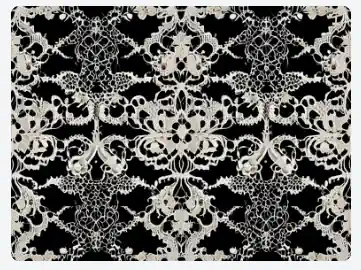
Originating in the late 15th century, lace was initially crafted by hand, making it a highly prized commodity among royalty and the elite. Over time, lace patterns have evolved, incorporating intricate designs that range from delicate floral motifs to bold geometric shapes.
Today, lace remains a staple in the fashion industry, adorning everything from bridal gowns to casual wear.
The versatility of lace patterns allows for endless creativity, whether used as a subtle accent or a statement piece.
Modern advancements in textile technology have also made lace more accessible, with machine-made options offering the same intricate beauty at a fraction of the cost.
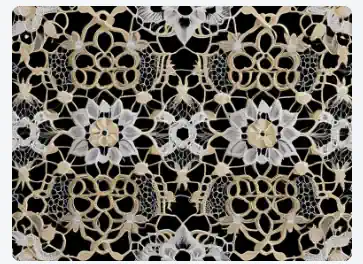
Furthermore, lace patterns have transcended clothing, finding their way into home décor, accessories, and even digital design.
As we continue to celebrate this timeless fabric, it is clear that lace patterns will remain a cherished element of style and craftsmanship, blending historical significance with contemporary appeal. Whether you are a designer, a fashion enthusiast, or simply an admirer of beautiful textiles, lace patterns offer a rich tapestry of inspiration and elegance.
Fair Isle
Fair Isle knitting, a traditional technique originating from the remote Fair Isle in the Shetland Islands of Scotland, has captivated the hearts of knitters worldwide for generations.
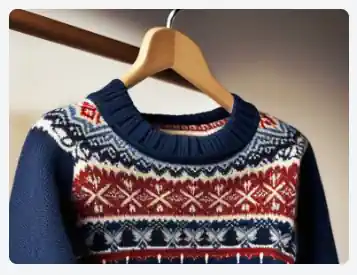
Renowned for its intricate patterns and vibrant colourwork, Fair Isle knitting employs the use of multiple colours to create stunning, interwoven designs that are as functional as they are beautiful.
This technique typically involves working with two colours per row, allowing for the creation of complex motifs that often feature geometric shapes, flora, and fauna.
The resulting fabric is not only visually striking but also exceptionally warm and durable, making it ideal for garments such as sweaters, hats, and scarves.
As interest in sustainable fashion grows, Fair Isle knitting has seen a resurgence, with modern crafters appreciating its rich history and artisanal quality.
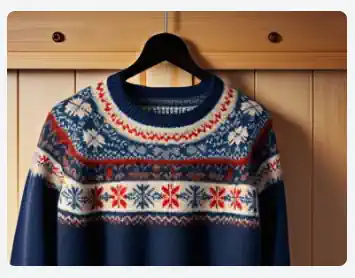
Whether you are a seasoned knitter or a novice eager to learn, exploring Fair Isle knitting can be a rewarding journey into a timeless craft that combines tradition with creativity.
Immerse yourself in the world of Fair Isle knitting and discover how this age-old technique continues to inspire and innovate in the realm of textile arts.
Case Studies: Successful Knitting Projects
Knitting is an age-old craft that continues to thrive in modern times, thanks to the creativity and dedication of passionate knitters. In this blog post, we delve into several case studies of successful knitting projects that have not only showcased exceptional skill but also inspired countless others.
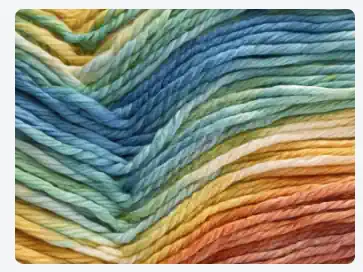 One standout project is the intricate lace shawl created by Jane Doe, which combines delicate patterns with luxurious yarn to produce a stunning wearable art piece.
One standout project is the intricate lace shawl created by Jane Doe, which combines delicate patterns with luxurious yarn to produce a stunning wearable art piece.
Another notable example is John Smith’s innovative use of recycled materials to knit eco-friendly tote bags, demonstrating that sustainability and artistry can go hand in hand.
Additionally, Sarah Lee’s community-driven blanket project, which involved contributions from over 50 local knitters, highlights the power of collective effort in creating something truly remarkable.
These case studies illustrate the diverse possibilities within the realm of knitting, offering valuable insights and inspiration for both novice and experienced knitters alike.
By examining these successful projects, readers can gain a deeper understanding of the techniques, materials, and creative processes that contribute to outstanding knitting achievements.
Whether you’re looking to start your own knitting journey or seeking fresh ideas for your next project, these case studies serve as a rich resource for inspiration and learning.
Knitted Blanket
A knitted blanket is the epitome of comfort and warmth, perfect for chilly evenings and adding a touch of handmade charm to your home decor. Crafting your own knit blanket can be an incredibly rewarding project, whether you’re a seasoned knitter or a beginner looking to dive into the world of knitting.
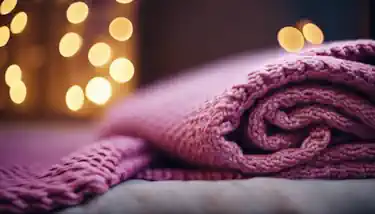 To start, choose a high-quality yarn that feels soft to the touch and is easy to work with; wool and acrylic blends are popular choices for their durability and warmth.
To start, choose a high-quality yarn that feels soft to the touch and is easy to work with; wool and acrylic blends are popular choices for their durability and warmth.
Next, select the right knitting needles; larger needles, such as size 10 or 11, can make the process faster and give your blanket a chunkier texture.
When planning your pattern, consider simple stitches like the garter or stockinette stitch, which are ideal for beginners yet still produce a beautiful, even fabric.
For those who are more advanced, intricate patterns like cables or lace can add a sophisticated touch. Don’t forget to measure your gauge to ensure your blanket turns out the desired size.
As you knit, remember to take breaks and enjoy the process—after all, each stitch is a step closer to creating a cosy masterpiece that you can cherish for years to come. Happy knitting!
Custom Sweaters
Elevate Your Wardrobe with Personalized Style Custom sweaters offer a unique blend of comfort, style, and individuality that sets them apart from mass-produced garments.
Whether you’re looking to showcase your personal brand, commemorate a special event, or simply express your unique fashion sense, custom sweaters provide the perfect canvas.
With a variety of materials, colours, and designs to choose from, you can create a sweater that truly reflects your personality. High-quality materials like merino wool, cashmere, and organic cotton ensure that your custom sweater is not only stylish but also durable and comfortable.
Advanced printing and embroidery techniques allow for intricate patterns and logos, making it easy to bring your vision to life.
Custom sweaters are also an excellent choice for businesses and organizations looking to create a cohesive, professional look for their team.
They make memorable gifts for family and friends, adding a personal touch that store-bought items simply can’t match.
By investing in custom sweaters, you’re not just buying a piece of clothing; you’re making a statement about who you are and what you value.
So why settle for off-the-rack when you can have a sweater that’s uniquely yours? Start designing your custom sweater today and elevate your wardrobe to a whole new level.
Research and Data on the Benefits of Machine Knitting
Machine knitting, a technique that has revolutionized the textile industry, offers numerous benefits substantiated by extensive research and data.
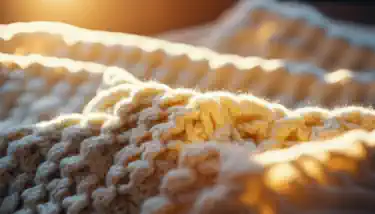 Studies indicate that machine knitting significantly enhances production efficiency, reducing the time required to create intricate patterns and large volumes of fabric.
Studies indicate that machine knitting significantly enhances production efficiency, reducing the time required to create intricate patterns and large volumes of fabric.
According to data from the International Journal of Clothing Science and Technology, machine knitting can increase production rates by up to 60% compared to traditional hand knitting.
This efficiency not only meets high demand but also reduces labor costs, making it economically advantageous for manufacturers. Additionally, machine knitting ensures uniformity and precision in fabric construction, which is crucial for maintaining consistent quality in mass production.
Research conducted by the Textile Research Journal highlights that the automated nature of machine knitting minimizes human error, leading to fewer defects and higher-quality finished products.
Moreover, advancements in knitting technology have introduced programmable machines capable of producing complex designs with minimal manual intervention, further enhancing creativity and innovation in textile design.
Environmental benefits are also notable; machine knitting optimizes material usage, reducing waste and promoting sustainable practices. In summary, the integration of machine knitting in the textile industry is supported by a wealth of research and data, underscoring its efficiency, economic viability, quality assurance, and environmental sustainability.
Conclusion: So You’ve Knit Your Way Here: Now Embrace the Machine Advantage!
We’ve explored the wonderful world of knitting machines, and hopefully, you’re brimming with creative ideas! But before you dive headfirst into your next project, let’s recap the key takeaways that make machine knitting such a compelling choice:
Speed Demon: Time is precious. Machine knitting lets you conquer intricate projects and large-scale creations in a fraction of the time hand knitting demands. No more waiting seasons for that perfect sweater – whip it up in time for the next chilly evening!
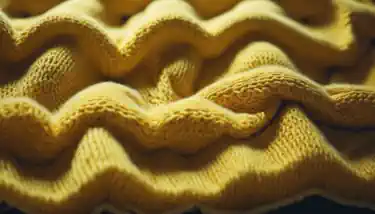 Precision Powerhouse: Say goodbye to wonky stitches and uneven tension! Machine knitting ensures consistent, professional-looking results every time. Imagine replicating complex patterns flawlessly – a dream come true!
Precision Powerhouse: Say goodbye to wonky stitches and uneven tension! Machine knitting ensures consistent, professional-looking results every time. Imagine replicating complex patterns flawlessly – a dream come true!
Kind to Your Hands: Repetitive hand motions can take a toll. Machine knitting takes the strain off your wrists and hands, allowing you to enjoy longer crafting sessions without the fatigue. Now you can knit guilt-free, knowing your body will thank you later.
Creative Catalyst: Don’t be limited! Machine knitting opens doors to a wider range of stitches and patterns that might be challenging or time-consuming by hand.
Unleash your inner designer and explore intricate textures and effects with ease.
This isn’t to say hand knitting is obsolete!
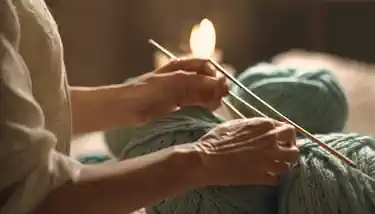 It offers a unique, meditative experience that machine knitting can’t replicate. But for those seeking efficiency, precision, and a boost in creativity, machine knitting is a powerful tool to add to your crafting arsenal.
It offers a unique, meditative experience that machine knitting can’t replicate. But for those seeking efficiency, precision, and a boost in creativity, machine knitting is a powerful tool to add to your crafting arsenal.
So, are you ready to embrace the machine advantage? With the right knowledge and a little practice, you’ll be churning out beautiful, high-quality projects in no time. Happy machine knitting!
